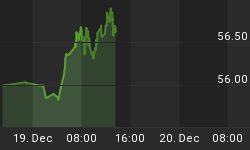U.S. gasoline prices jumped the most since 2011 between New Year’s Day and early May this year, a few weeks before the unofficial start of the summer driving season—Memorial Day. But the national average price for regular gas has trended lower since it hit its highest so far this year on May 3.
Average U.S. prices of regular gasoline were down this Memorial Day weekend compared to last year’s and were lower than last week and last month, too.
AAA expected a record number of Americans to have hit the road by car this weekend—at 37.6 million, the number was the most on record for the holiday and 3.5 percent more than last year.
While this year’s Memorial Day average gas price of $2.830/gal is down compared to last year’s average of $2.975, and gasoline prices may continue to drop in the next two to three weeks, analysts and government estimates point to rising gas prices in the second half of the summer season due to higher gasoline demand and gasoline refining margins, and lower gasoline inventories.
The highest average price this year was hit on May 3, at $2.916/gal, according to GasBuddy. The price-tracking website and its analysts believe that the downward movement will continue for another couple of weeks.
Questions remain, however, about the price trends in the second half of the summer, GasBuddy Head of Petroleum Analysis, Patrick DeHaan, told Yahoo Finance on Friday. Related: Younger Buyers Favor Lab-Grown Diamonds
For the next two-three weeks, average gas prices are expected to come down as refineries have already emerged from the spring maintenance season, producing more gasoline. Yet, after mid-June, several factors could drive gas prices higher and potentially up to a national average of $3/gal. These include the possibility of a U.S.-China trade deal that would lift global oil prices and the hurricane season in July and August potentially disrupting gasoline supply from U.S. Gulf Coast refineries, according to DeHaan.
Speaking to FOX Business on Friday, DeHaan said that “relief is certainly coming” over the next few weeks, expecting the national average to slip by 5 to 10 cents.
According to AAA, “Increased gasoline stocks amid robust summer demand may help to suppress pump prices” in coming weeks.
Earlier this month, AAA forecast that the vast majority of travelers—37.6 million—would hit the road by automobile this Memorial Day weekend—the most on record for the holiday and 3.5 percent more than last year.
“Overall, prices are very similar to this time last year and, like then, they aren’t letting that deter them from taking summer road trips,” AAA gas price expert Jeanette Casselano said, commenting on Americans’ summer plans.
According to GasBuddy’s 2019 Summer Travel survey, almost 75 percent of Americans said they would take a road trip this summer, up by 16 percent compared to last year. A total of 38 percent cited high gas prices as impacting their summer travel decisions, nearly the same as the gas price sentiment last year.
Vehicle management and reimbursement platform Motus predicted in mid-May that Americans are expected to drive a record number of miles in the third quarter, as employment and population grow. U.S. highway travel is expected to increase by 1.3 percent this summer, and the national average fuel price would be between $2.90 and $3.15 for Q3 2019, Motus market research analyst Ken Robinson said on May 15. Related: Russian Central Bank Eyes Gold-Backed Crypto
“Price movement will depend heavily on whether OPEC+ countries agree to increase production when they meet at the end of June and how quickly they execute. Additionally, unexpected supply disruptions in unstable areas could also affect these predictions,” Robinson said.
The new IMO rules on shipping fuel could also drive U.S. gas prices higher, as they could lift diesel demand and prices and constrain gasoline supplies in the U.S., Robinson told MarketWatch last week.
The EIA expects U.S. regular gasoline retail prices to average $2.92/gal for the 2019 summer driving season, up from an average of $2.85/gal last summer.
“The higher forecast gasoline prices primarily reflect EIA’s expectation of higher gasoline refining margins this summer, despite slightly lower crude oil prices,” the EIA said in its latest Short-Term Energy Outlook.
By Tsvetana Paraskova for Oilprice.com
















